Museum Tour: TEPCO in Shibuya
One recent weekday morning junior reporter Junko entered my office from the Newsroom. "What do you think you are doing!" she demanded. A not too uncommon refrain, I'm afraid.
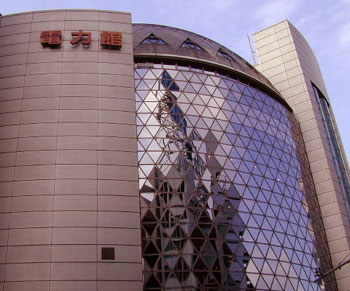 But her expression of shock that was extreme, even for her. It was as if she had found me eating cold pizza in my underwear. (I ought to know because the last time she walked into my office I was indeed eating cold pizza in my underwear.)
But her expression of shock that was extreme, even for her. It was as if she had found me eating cold pizza in my underwear. (I ought to know because the last time she walked into my office I was indeed eating cold pizza in my underwear.)
"Grilling hotdogs," I explained calmly. "Did you know this building is full of rubes who will pay 500 yen, before mustard and onions, for one of these little gems of Americana?"
The grill sat to the left of desk.
"But do you have any idea how inefficient that is? A gas burner is much more efficient than that electric grill."
"What do I care," I mused. At that instant, three dogs were ready for buns. I worked them with the tongs. "I'm not paying the electricity bill in this place. This little subtraction pads my profit margin..."
"After Tokaimura you can be so glib?"
"After what?" I asked, retrieving three buns from the bag at the grill's edge.
Pushing a TEPCO Electric Energy Museum brochure into my face, she implored: "Sounds to me like you need an electricity education."
After September 30th of last year, the questions started. Worried faces and distressed looks accompanied each inquiry.
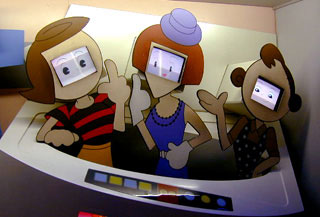 "We can assure you that we were not involved in the Tokaimura situation," repeated Nobuko, an employee at the TEPCO Electric Energy Museum, of her standard response to concerned visitors about the JCO Co. nuclear fission accident in which 49 people were exposed.
"We can assure you that we were not involved in the Tokaimura situation," repeated Nobuko, an employee at the TEPCO Electric Energy Museum, of her standard response to concerned visitors about the JCO Co. nuclear fission accident in which 49 people were exposed.
Certainly, confusion was understandable. Immediately following the incident, government officials advised residents to stay inside and shut their windows. And given that the JCO radiation processing plant is a mere 70 miles northeast of Tokyo, peace of mind was hard to come by.
Though the museum, an eight-floor building situated between department stores and trendy boutiques in the Shibuya section of Tokyo, will not reassure anyone of the safety of Japan's nuclear energy program, it does generate a sense of appreciation for a commodity we often take for granted.
The building itself looks like it could manufacture a little fission itself. From the street, one looks up at a half cylinder-shaped, glass, steel, and concrete structure under a domed roof. Above the entrance, a slice of the outer layer of concrete has been cut away to reveal recessed glass windows extending for all eight floors. This missing piece gives the appearance of a glass lipstick poised to rise from its concrete holder.
Mary Poppins welcomes guests arriving in the lobby on the second floor. Actually, thee are receptionists dressed like Mary, dark striped suit and large brimmed hat, seated behind a desk and distributing introductory pamphlets: "Let's Make Friends with Electricity."
Nobuko was assigned as my personal tour guide.
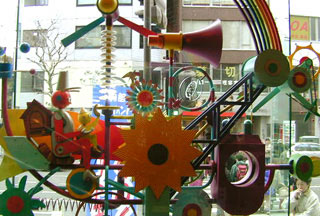 My first question: Is TEPCO an enjoyable place to work?
My first question: Is TEPCO an enjoyable place to work?
"I have learned many things about electricity since starting work here," she beamed.
"So, can you come over and rewire my apartment?"
"Unfortunately, I only understand electricity generation. Everyone must realize the importance that electricity plays in daily life. First, why don't we look at the Electric Forest?" she said pointing over to the center of the room on the third floor.
The Electric Forest is a true tribute to '70s arena rock. One large central tree distributes various shades of color over the entire floor through its limbs. Surrounding this illumination is a number of children's games that demonstrate the importance of electricity.
These hands-on games include "Aerial Labyrinth" (hopscotch and Twister combined and played on changeable display monitors pointed at the ceiling), "Quiz Park" (questions and answers about electricity) and, perhaps most interesting of all, "Touring Adventure." For the latter, the player rides on the back of a honeybee. By pedaling a bicycle, the flight of a honeybee through a forest is simulated with energy consumption displayed on a screen. Appreciation through pedaling is definitely the point.
But from me, Nobuko did not sense such a feeling. She told me that natural resources are in short supply in Japan. "We import 80% of our total energy-producing materials, including 99% of our petroleum," she said as though reading a Ministry of Energy white paper.
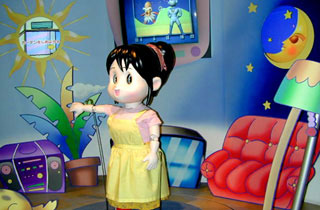 Working with electricity in your home - from kitchen to bath - is the key to the fourth floor. The title says it all: "Electricity is Your Partner for Life."
Working with electricity in your home - from kitchen to bath - is the key to the fourth floor. The title says it all: "Electricity is Your Partner for Life."
Full size models of modern Japanese housing utilities allow a glimpse inside the latest in modern facilities. Electricity is safe, convenient, and easy to use, or so said Nobuko.
Realization of this partnership is shown through such amenities as large ovens, shiny water heaters, and heated toilets. (Note: mouse-sized cockroaches were not seen scurrying about so the authenticity of these displays as being representative of an everyday Japanese household was shaky at best.)
In moving up the stairs again to check out the "Resource Friendly Urban Power," I asked if any interesting incidents have happened at the museum.
"Well," she said, "in addition to the 'Demand Side Management Theater' and the 'Science Laboratory,' this floor has the 'Urban Carousel.' That exhibit is very dark and one time, through a monitor, a coworker and myself watched a couple do nasty things together."
"For example?"
Covering her mouth with her right palm, she whispered, "The woman put her hand down the front of the man's pants."
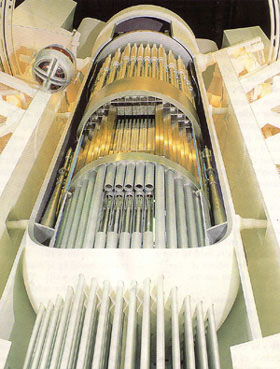 Moving on. The "Urban Carousel" is a rotating theater that tells the story of the plight of an imaginary metropolis where a monster begins eating its electricity. The story is told in four acts and in the end it is revealed that the monster was just in the viewer's mind and that we must not take energy for granted.
Moving on. The "Urban Carousel" is a rotating theater that tells the story of the plight of an imaginary metropolis where a monster begins eating its electricity. The story is told in four acts and in the end it is revealed that the monster was just in the viewer's mind and that we must not take energy for granted.
Before we moved further, Nobuko reminded me not to take energy for granted, saying, "Did you know that nuclear energy represents one-third of Japan's total consumption?"
This was her introduction to the next floor, which poses the question: "How will man supply his energy needs in the 21st century?"
For such places as Tokaimura, the answer is crucial. Tokaimura was the location of the nation's first nuclear reactor when it opened in 1957. Today it is one of 13 in the area, creating an industry responsible for two-thirds of its revenue and 30% of its jobs.
The nuclear process is documented from soup to nut in "Energy for Tomorrow." The beautifully constructed scale models of a nuclear power station and a nuclear reactor give the visitor the lowdown on nuclear fusion and the fuel cells that are necessary in the process of converting nuclear fuel to energy.
The seventh floor displays full-size samples of the components that transfer electricity to Tokyo's homes from the generating source. From the large turbine to the underground conduit to the hydroelectric power generation station, every aspect of electricity transfer is on display in intricate detail.
At the tour's conclusion, Nobuko and I shook hands (creating a static of another kind entirely), and, of course, confirming my friendship with electricity.
Note: The TEPCO Electric Energy Museum is open from 10 a.m. to 6 p.m. daily (except Wednesday) and can be reached at 03-3477-1191.

